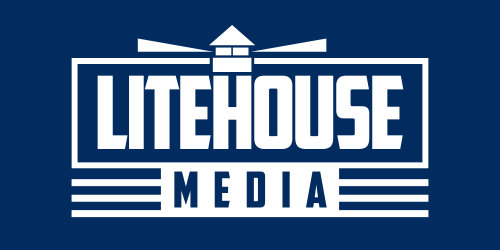It’s been a rough few weeks for St. Louis City SC as the club has dropped three in a row, including a painful defeat to rival Kansas City last weekend. As fans, myself included, continue trying to wash the stink of that loss off, I figured I’d take one last look at some takeaways from the disappointing weekend before turning the focus to Columbus on Sunday. Let’s get it over with.
Célio Pompeu and Conrad Wallem were the only real bright spots. Wallem continues to impress. He started the match as an attacking midfielder alongside Marcel Hartel. While playing in an advanced position, he was threatening and created the best scoring chance of the night when his effort in the 16th minute rattled the post. His strong performance continued after being moved to wing back on the left side following an injury to Joakim Nilsson. He proved to be a consistent threat in the build up as he combined with Célio Pompeu on numerous occasions. The pair continue to build chemistry as they become a formidable and consistent duo in attack. Wallem led the club in progressive carries with five and was second in shot creating actions with four. Pompeu, meanwhile, was tied for the lead in successful take ons with three and was third in shot creating actions for St. Louis in the loss. If these two can continue to find ways to consistently impact the attack, City may find a way to end its’ 406 minute drought when it comes to goals from open play.

Courtesy MLSStat
The Akil Watts experiment needs to end. I understand City doesn’t have a proven replacement for Tomas Totland, but it’s time to be honest and admit Watts in that position doesn’t work. The right side of the St. Louis attack was basically non-existent on Saturday night. Watts was 23 of 36 passing and had a total of three progressive passes on the evening. As a result, he was the second lowest player in terms of goals added (g+) on the night. In a system designed to build offense through width and your wingbacks, that just will not cut it.
Because of that ineffectiveness, the offensive play became predictable and lopsided. Based on data from mlsstat on Bluesky, St. Louis had 74% of its’ passes into the final third on the left and a staggering 88% of passes into the box from the left. Compare that to just 12% from the right and 0% from the central part of the pitch respectively when it comes to passes into the box and it’s clear how City wanted to play. That imbalance makes defending our attacks easier and speaks to how much this team misses Totland.

Courtesy Sebastian Bush
City is still struggling to produce a high quantity of quality chances to score. Even when an increase in added attacking players on the pitch, Mellberg can’t seem to find a way to get his team into gear consistently in the final third. While the St. Louis gaffer seems to insist that his side creates enough chances to win the game, the analytics don’t necessarily agree. Yes, City produced 11 shots and 7 of those were on target; only one fell into to the “great” expected goals category based on data from Sebastian Bush. To earn that ranking, a shot must have a value of .33 or higher. That one chance came from Wallem in the 16th minute. It equated as almost one-third of City’s total xG in the game and is sort of this season in a microcosm. Seven of St. Louis’ 79 shots this season fall into that category and only one of the seven has resulted in a goal. City is a side missing an elite finisher so for this team to have success they either need to produce these types of chances more often or have to be clinical when they do.
Is the pressure starting to mount on Olof Mellberg and Lutz Pfannenstiel? Coming into the season, St. Louis’ Sporting Director touted the hiring of Mellberg, citing it as part of the evolution of the club as City 2.0 was taking shape. Through seven games, fans have had little to be excited about and the style of play hardly resembles that of the club over its’ first two seasons. The high energy, high press style that was referred to by Pfannenstiel as “non-negotiable” hasn’t been seen. The club ranks last in passses per defensive action (PPDA). PPDA is a metric that measures how much pressure you place on your opponent by calculating how many passes you allow them to make before you attempt a defensive action. In previous seasons, City has ranked among the league leaders but the script has been flipped on its’ head this season.
There have been other inconsistencies between the on field product and what was promised when Mellberg was unveiled. The former Premier League center back was described as a manager who wasn’t afraid to change to a plan B or C if the situation called for it. Mellberg himself went so far as to say he would allow players to dictate the formation; but over the first seven match days we have yet to really see either of those things happen. Mellberg has been resolute in playing a combination of 5-4-1 or 3-4-1-2 formation with anything but stellar results. His side has been shut out in five of seven and is in the midst of a 406 minute open play goal drought spanning across this three game skid. At the very least, questions have to start to be asked of Mellberg and perhaps even of Pfannenstiel who was responsible for the roster construction.
The next few weeks will be a massive test for City. As Mellberg tries to right the ship, St. Louis is heading into one of the most difficult stretches in terms of opponents. The respective conference leaders, Columbus Crew and Vancouver Whitecaps, are the next two opponents. Those fixtures are followed by tips to Los Angeles and Seattle before the five game block wraps up at home against San Diego. It’s not quite a death knell if City struggles but I’d expect to have a much clearer picture of where this roster stands, what summer transfer needs may be and what Mellberg’s strengths and weaknesses are as an MLS manager after this difficult period.
Taking his passion for soccer and St. Louis to the next level, Jeremy aims to provide analytical coverage of all this St. Louis City SC.




